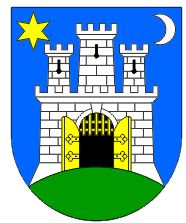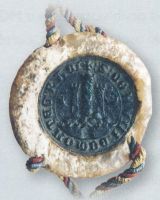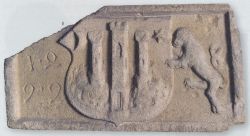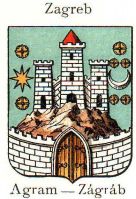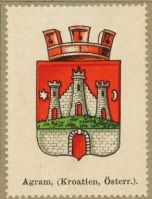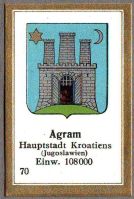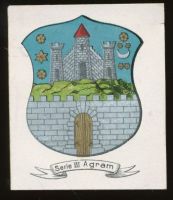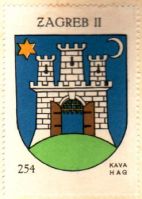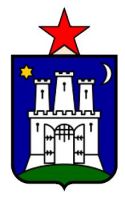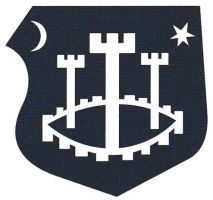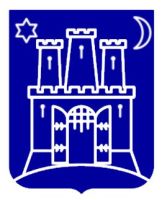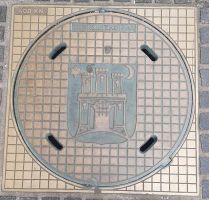Zagreb: Difference between revisions
Knorrepoes (talk | contribs) |
Knorrepoes (talk | contribs) m (Text replacement - "{{hr}}'''" to "'''") Tags: Mobile edit Mobile web edit |
||
| (7 intermediate revisions by the same user not shown) | |||
| Line 1: | Line 1: | ||
{{ | ''' {{uc:{{PAGENAME}}}} ''' | ||
[[File:{{PAGENAME}}.jpg|center|300 px|Coat of arms (crest) of {{PAGENAME}}]] | |||
===Official blazon=== | |||
===Origin/meaning=== | |||
The arms were officially granted in 1897, adopted on June 30, 1975, November 12, 1992 and again adopted on May 12, 2000. | |||
The merchant’s city of Zagreb on the hill of Gradec was granted the privileges of the Royal and Free City by the Golden Bull issued by the Croato-Hungarian king Bela IV in 1242, for the services rendered in his retreat from the Tatars hordes. | |||
In 1850 four towns (Kaptol, Nova Ves, Laška ulica and Horvati) were merged into the Free and Royal Capital City of Zagreb. After the World War II the city of Zagreb was administratively divided into communities with several administrative changes over the next years, so in 1964 Zagreb was composed of 14 communities as basic units of local self-government. After Croatia attained independence in 1991, the territorial structure of the state was changed in 1993, and the 14 communities were united into a single capital city with the status of a county. Zagreb is divided into 17 city districts, which do not have any symbols of their own. | |||
In 1896 new arms for the city were determined and officially granted in 1897 (see image below). It consisted of a silver castle in blue, with a star and moon. This design was based on the historical seals of the city dating from the 14th century. The castle refers to the city on the hill and the star and crescent are widely used in medieval times as symbols for eternity. | |||
After 1850 the city already had adopted the design, but shown in the flag in red, however, on black and white images the hatching showed blue, not red. Whether the historical colours are red or blue is still not clear. | |||
The arms thus have not changed since 1897, although the design has been adopted several times since due to the municipal changes. The mural crown from 1897 has not been used after 1945. During 1945-1975 the arms were sometimes seen with a red star above the shield, or, in a decree from 1965, in a blue-white outlined version. | |||
===Image gallery=== | |||
| | <gallery widths=250px heights=200px perrow=0> | ||
File:zagrebz1.jpg|alt=Arms of Zagreb|Seal on a charter from 1677 | |||
File:zagrebz2.jpg|alt=Arms of Zagreb|Seal matrix from the early 19th century | |||
File:zagreb3.jpg|alt=Arms of Zagreb|The arms on a stone dating from 1499 | |||
File:zagreb1897.jpg|alt=Arms of Zagreb|The arms on a grant from 1897 | |||
File:zagreb-strohl.jpg|alt=Arms of Zagreb|The arms by Ströhl (1901) | |||
File:384b.wsa.jpg|alt=Arms of Zagreb|The arms in the [[Wappen-Sammlung Series 2 Cities and regions|Wappen-Sammlung]] (+/- 1910) | |||
File:070.abd.jpg|alt=Arms of Zagreb|The arms in a 1930s [[Abdulla-Wappen der Bekanntesten und Bedeutendsten Ausländischen Hauptstädte|album]] | |||
| | File:agram.cva.jpg|alt=Arms of Zagreb|The arms in a [[Continentale Verlags Anstalt|German album]] +/- 1910 | ||
| | File:0628.aba.jpg|alt=Arms of Zagreb|The arms in the [[Abadie]] albums | ||
File:zagreb2.hagyu.jpg|alt=Arms of Zagreb|The arms in the [[Coffee Hag Yugoslavia|Coffee Hag album]] +/- 1932 | |||
File:zagreb5.jpg|alt=Arms of Zagreb|The arms in 1947 | |||
File:zagreb6.jpg|alt=Arms of Zagreb|Design from 1950 | |||
File:zagreb4.jpg|alt=Arms of Zagreb|The arms from 1965 | |||
File:zagreb-cover.jpg|alt=Arms of Zagreb|The arms on a manhole cover | |||
</gallery> | |||
{{media}} | {{media}} | ||
[[Literature]] | [[Civic Heraldry Literature - Croatia|'''Literature''']] Heimer, 2009 | ||
[[Category:Croatian Municipalities]] | [[Category:Croatian Municipalities]] | ||
[[Category:Zagreb]] | [[Category:Zagreb]] | ||
Latest revision as of 14:39, 10 March 2024
ZAGREB
Official blazon
Origin/meaning
The arms were officially granted in 1897, adopted on June 30, 1975, November 12, 1992 and again adopted on May 12, 2000.
The merchant’s city of Zagreb on the hill of Gradec was granted the privileges of the Royal and Free City by the Golden Bull issued by the Croato-Hungarian king Bela IV in 1242, for the services rendered in his retreat from the Tatars hordes.
In 1850 four towns (Kaptol, Nova Ves, Laška ulica and Horvati) were merged into the Free and Royal Capital City of Zagreb. After the World War II the city of Zagreb was administratively divided into communities with several administrative changes over the next years, so in 1964 Zagreb was composed of 14 communities as basic units of local self-government. After Croatia attained independence in 1991, the territorial structure of the state was changed in 1993, and the 14 communities were united into a single capital city with the status of a county. Zagreb is divided into 17 city districts, which do not have any symbols of their own.
In 1896 new arms for the city were determined and officially granted in 1897 (see image below). It consisted of a silver castle in blue, with a star and moon. This design was based on the historical seals of the city dating from the 14th century. The castle refers to the city on the hill and the star and crescent are widely used in medieval times as symbols for eternity.
After 1850 the city already had adopted the design, but shown in the flag in red, however, on black and white images the hatching showed blue, not red. Whether the historical colours are red or blue is still not clear.
The arms thus have not changed since 1897, although the design has been adopted several times since due to the municipal changes. The mural crown from 1897 has not been used after 1945. During 1945-1975 the arms were sometimes seen with a red star above the shield, or, in a decree from 1965, in a blue-white outlined version.
Image gallery
The arms in the Wappen-Sammlung (+/- 1910)
The arms in a 1930s album
The arms in a German album +/- 1910
The arms in the Abadie albums
The arms in the Coffee Hag album +/- 1932
Contact and Support
Partners:
Your logo here ?
Contact us
© since 1995, Heraldry of the World, Ralf Hartemink 
Index of the site
Literature Heimer, 2009
